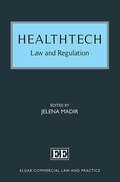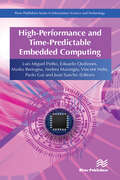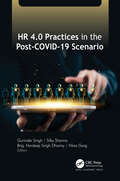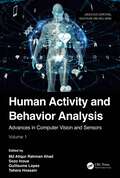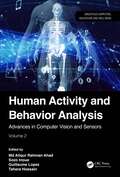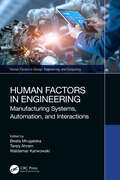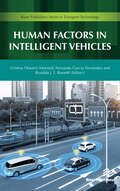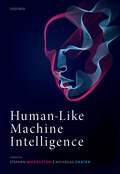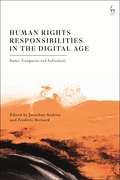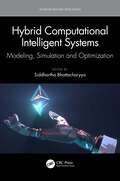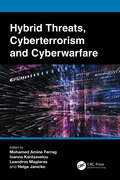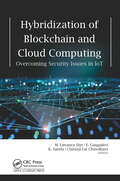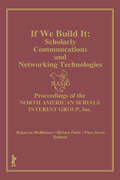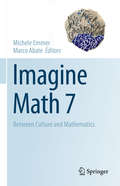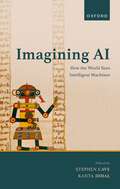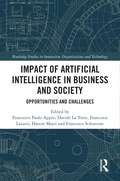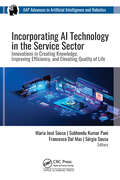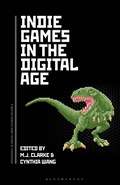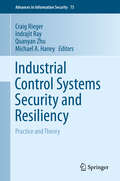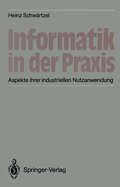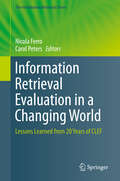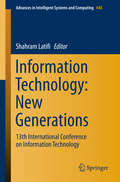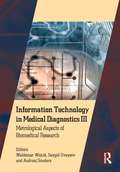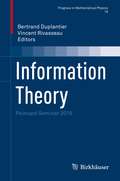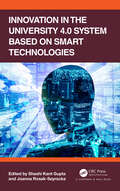- Table View
- List View
HealthTech: Law and Regulation (Elgar Commercial Law and Practice series)
This comprehensive book provides a detailed survey and practical examination of a wide range of legal and regulatory topics in HealthTech. Combining the insights of leading healthcare experts from around the world, chapters first examine the key characteristics, use cases and regulation in the field, before turning to the development and potential applications of cutting-edge technologies in healthcare. The book also addresses the main issues involved in setting up and running a HealthTech business, highlighting the vital role this will play in developing the technologies and skill sets required for the future of the sector. Key features include: • analysis of the impact of emerging innovations on the accessibility, efficiency and quality of healthcare and its effects on healthcare providers • examination of artificial intelligence, blockchain and digital identity applications in healthcare, alongside associated regulatory challenges • guidance on the financial requirements of healthcare start-ups at different stages of growth and various collaboration and partnership models in the HealthTech market • discussion of the major regulatory questions affecting the HealthTech industry, from data protection, public procurement and product liability, to the regulation of medical devices, intellectual property and advertising. HealthTech: Law and Regulation will be an invaluable resource for both in-house lawyers in the healthcare and pharmaceutical sectors, as well as those working for law firms practising in these areas. It will also be of interest to academics and students teaching or researching in healthcare law.
High Performance Embedded Computing
Nowadays, the prevalence of computing systems in our lives is so ubiquitous that we live in a cyber-physical world dominated by computer systems, from pacemakers to cars and airplanes. These systems demand for more computational performance to process large amounts of data from multiple data sources with guaranteed processing times. Actuating outside of the required timing bounds may cause the failure of the system, being vital for systems like planes, cars, business monitoring, e-trading, etc. High-Performance and Time-Predictable Embedded Computing presents recent advances in software architecture and tools to support such complex systems, enabling the design of embedded computing devices which are able to deliver high-performance whilst guaranteeing the application required timing bounds. Technical topics discussed in the book include: Parallel embedded platforms Programming models Mapping and scheduling of parallel computations Timing and schedulability analysis Runtimes and operating systemsThe work reflected in this book was done in the scope of the European project P SOCRATES, funded under the FP7 framework program of the European Commission. High-performance and time-predictable embedded computing is ideal for personnel in computer/communication/embedded industries as well as academic staff and master/research students in computer science, embedded systems, cyber-physical systems and internet-of-things.
HR 4.0 Practices in the Post-COVID-19 Scenario
This new volume examines the dramatic impact of the COVID-19 pandemic and its embrace of the digital revolution on human resources management practices, providing a better understanding of the emerging role of HR 4.0 and equipping HR professionals with the knowledge they need to chart plausible future organizational directions. The book will familiarize readers with the most relevant and latest concepts of HR 4.0 practices, providing tools for solutions to complex problems in managing a multigenerational workforce in this volatile, uncertain, complex, and ambiguous (VUCA) world. The chapter authors discuss an array of topics, including the work-from-home transition, digitization of the workforce, employee work-life balance, task automation technologies via AI, HRM curriculum at schools and universities, employee development, e-recruitment, internal marketing, and more.
Human Activity and Behavior Analysis: Advances in Computer Vision and Sensors: Volume 1 (Ubiquitous Computing, Healthcare and Well-being)
Human Activity and Behavior Analysis relates to the field of vision and sensor-based human action or activity and behavior analysis and recognition. The book includes a series of methodologies, surveys, relevant datasets, challenging applications, ideas, and future prospects.The book discusses topics such as action recognition, action understanding, gait analysis, gesture recognition, behavior analysis, emotion and affective computing, and related areas. This volume focuses on relevant activities in three main subject areas: Healthcare and Emotion, Mental Health, and Nurse Care Records.The editors are experts in these arenas and the contributing authors are drawn from high-impact research groups around the world. This book will be of great interest to academics, students, and professionals working and researching in the field of human activity and behavior analysis.
Human Activity and Behavior Analysis: Advances in Computer Vision and Sensors: Volume 2 (Ubiquitous Computing, Healthcare and Well-being)
Human Activity and Behavior Analysis relates to the field of vision and sensor-based human action or activity and behavior analysis and recognition. The book includes a series of methodologies, surveys, relevant datasets, challenging applications, ideas, and future prospects.The book discusses topics such as action recognition, action understanding, gait analysis, gesture recognition, behavior analysis, emotion and affective computing, and related areas. This volume focuses on two main subject areas: Movement and Sensors, and Sports Activity Analysis.The editors are experts in these arenas, and the contributing authors are drawn from high-impact research groups around the world. This book will be of great interest to academics, students, and professionals working and researching in the field of human activity and behavior analysis.
Human Factors in Engineering: Manufacturing Systems, Automation, and Interactions (Human Factors in Design, Engineering, and Computing)
This book addresses aspects of human factors in engineering and provides a detailed discussion of novel approaches, systems engineering tools, artificial cognitive systems, and intelligent technologies and automation. It presents applications in diverse areas, including digital manufacturing, transportation, infrastructure development, and cybersecurity. This book: • Merges the engineering perspective with the human factors and social dimension of computing and artificial intelligence–based technologies. • Covers technological development of human factors engineering and the human dimension in applications across all areas of modern society. • Relates to human behavior in the context of technology and systems interactions. • Discusses the design and the appropriation of 3D printing techniques in the management of an innovative product system. • Presents systems engineering tools, user experience methodologies, artificial cognitive systems, intelligent technologies, and automation. The text is for students, professionals, and researchers in the fields of ergonomics, human factors, industrial engineering, and manufacturing engineering.
Human Factors in Intelligent Vehicles
Human Factors in Intelligent Vehicles addresses issues related to the analysis of human factors in the design and evaluation of intelligent vehicles for a wide spectrum of applications and over different dimensions. To commemorate the 8th anniversary of the IEEE ITS Workshop on Human Factors (http://hfiv.net) some recent works of authors active in the automotive human factors community have been collected in this book.Enclosed here are extended versions of papers and tutorials that were presented at the IEEE ITSS Workshop on “Human Factors in Intelligent Vehicles” and also included is additional deeper analysis along with detailed experimental and simulation results.The contributors cover autonomous vehicles as well as the frameworks for analyzing automation, modelling and methods for road users’ interaction such as intelligent user interfaces, including brain-computer interfaces and simulation and analysis tools related to human factors.
Human-Like Machine Intelligence
In recent years there has been increasing excitement concerning the potential of Artificial Intelligence to transform human society. This book addresses the leading edge of research in this area. The research described aims to address present incompatibilities of Human and Machine reasoning and learning approaches. According to the influential US funding agency DARPA (originator of the Internet and Self-Driving Cars) this new area represents the Third Wave of Artificial Intelligence (3AI, 2020s-2030s), and is being actively investigated in the US, Europe and China. The chapters of this book have been authored by a mixture of UK and other international specialists. Some of the key questions addressed by the Human-Like Computing programme include how AI systems might 1) explain their decisions effectively, 2) interact with human beings in natural language, 3) learn from small numbers of examples and 4) learn with minimal supervision. Solving such fundamental problems involves new foundational research in both the Psychology of perception and interaction as well as the development of novel algorithmic approaches in Artificial Intelligence.
Human Rights Responsibilities in the Digital Age: States, Companies and Individuals
This book examines the tangled responsibilities of states, companies, and individuals surrounding human rights in the digital age. Digital technologies have a huge impact – for better and worse – on human lives; while they can clearly enhance some human rights, they also facilitate a wide range of violations.States are expected to implement efficient measures against powerful private companies, but, at the same time, they are drawn to technologies that extend their own control over citizens. Tech companies are increasingly asked to prevent violations committed online by their users, yet many of their business models depend on the accumulation and exploitation of users' personal data. While civil society has a crucial part to play in upholding human rights, it is also the case that individuals harm other individuals online. All three stakeholders need to ensure that technology does not provoke the disintegration of human rights.Bringing together experts from a range of disciplines, including law, international relations, and journalism, this book provides a detailed analysis of the impact of digital technologies on human rights, which will be of interest to academics, research students and professionals concerned by this issue.
Hybrid Computational Intelligent Systems: Modeling, Simulation and Optimization (Quantum Machine Intelligence)
Hybrid Computational Intelligent Systems – Modeling, Simulation and Optimization unearths the latest advances in evolving hybrid intelligent modeling and simulation of human-centric data-intensive applications optimized for real-time use, thereby enabling researchers to come up with novel breakthroughs in this ever-growing field. Salient features include the fundamentals of modeling and simulation with recourse to knowledge-based simulation, interaction paradigms, and human factors, along with the enhancement of the existing state of art in a high-performance computing setup. In addition, this book presents optimization strategies to evolve robust and failsafe intelligent system modeling and simulation. The volume also highlights novel applications for different engineering problems including signal and data processing, speech, image, sensor data processing, innovative intelligent systems, and swarm intelligent manufacturing systems. Features: • A self-contained approach to integrating the principles of hybrid computational intelligence with system modeling and simulation. • Well-versed foundation of computational intelligence and its application to real life engineering problems. • Elucidates essential background, concepts, definitions, and theories thereby putting forward a complete treatment on the subject. • Effective modeling of hybrid intelligent systems forms the backbone of almost every operative system in real-life. • Proper simulation of real-time hybrid intelligent systems is a prerequisite for deriving any real-life system solution. • Optimized system modeling and simulation enable real-time and failsafe operations of the existing hybrid intelligent system solutions. • Information presented in an accessible way for researchers, engineers, developers, and practitioners from academia and industry working in all major areas and interdisciplinary areas of hybrid computational intelligence and communication systems to evolve human-centered modeling and simulations of real-time data-intensive intelligent systems.
Hybrid Threats, Cyberterrorism and Cyberwarfare
Nowadays, in Cyberspace there is a burst of information that everyone has access. However, apart from the advantages the Internet offers, it also hides numerous dangers for both people and nations. Cyberspace has a dark side, including terrorism, bullying, and other types of violence. Cyberwarfare is a kind of virtual war that causes the same destruction that a physical war would also do. A hybrid threat is an umbrella term, encompassing a wide variety of existing adverse circumstances and actions, such as terrorism, migration, piracy, corruption, ethnic conflict etc and is not exclusively a tool of asymmetric or non-state actors, but can be applied by state and non-state actors alike. ‘Cyber-conflict’ and ‘cyber-war’ serve as examples of the use of new technologies within the scope of hybrid threats. Cyber-war basically refers to a sustained computer-based cyber-attack by a state against the IT infrastructure of a target state. On the other hand cyber-security is a major factor that shapes productivity and efficiency of the modern industry in both technical and economic terms. The book discusses and analyses current posture of cyberterrorism, cyberwarfare, and hybrid threats, sector specific cyber-attacks that have the form of cyberterrorism and presents the recent actions that EU, USA and other Nations have taken in order to strengthen their systems against such attacks. There has never been a higher risk of a major catastrophe as a result of the rise in offensive cyber activity, particularly the possibility of cyber-physical strikes against critical services. Recent cyber-attacks against critical infrastructures along with the continuous migration crisis have been the main driving forces that led to the decision to publish this book.
Hybridization of Blockchain and Cloud Computing: Overcoming Security Issues in IoT
Exploring many aspects of blockchain technologies and providing an overview of the latest cuttingedge developments along with their diversified business applications, this volume addresses the challenges, emerging issues, and problems in classical centralized architecture and covers how blockchain platforms provide almost magical solutions and novel services for improving business processes. Focusing on blockchain technology-based distributed transactions for industrial use, the chapters address applications in sectors such as healthcare, pharmaceutical drug supply, finance and banking, agriculture and farming, semantic web services, etc. The book explores blockchain applications associated with security issues, cryptocurrencies, cloud computing, Internet of Things, estimating intelligence (of crows, as an example) using artificial intelligence, and more. The chapters discuss deployment, feasibility studies, and the many diverse services offered by blockchain technology
If We Build It: Scholarly Communications and Networking Technologies: Proceedings of the North American Serials Inte
Help lay the foundation for the future of scholarly communication with these informative chapters on new information technologies and predictions for developments in the publishing industry. If We Build It, the proceedings from the 7th annual conference of the North American Serials Interest Group, stresses that the time to prepare for the revolution and phenomenal growth in electronic technology is now.This groundbreaking book addresses important questions about the future that libraries need to answer today such as: What will change for serials librarians, vendors, and publishers as ink and paper become the oddity and electronic transmitters and receivers become the norm? What services will be in demand and who will provide them? Which economic models will keep them afloat? Most importantly, can the disparate groups currently active in scholarly communication work together to build the physical, social, and economic backbone of a new model?If We Build It is an invaluable guide to the future of serials librarianship. It describes new technologies, predicts how the publishing industry will develop in the near future, and explores how the library may evolve within a new system of scholarly communication. Just a few of the exciting topics covered in these proceedings include the development of standards for networking technologies, the shift from ownership to access in libraries as a result of electronic information, the history of scholarly communication, copyright of electronic data, higher education in the 1990?s, marketing in libraries. A unique perspective on issues of cooperation between librarians, scholars, and publishers is provided by the inclusion of a joint conference day with the Society for Scholarly Publishing. If We Build It is an energizing look at the new possibilities for libraries and a call to strengthen structures and work together to build a solid future for libraries within the future of scholarly communication.
Imagine Math 7: Between Culture and Mathematics
Imagine mathematics, imagine with the help of mathematics, imagine new worlds, new geometries, new forms. Imagine building mathematical models that make it possible to manage our world better, imagine solving great problems, imagine new problems never before thought of, imagine combining music, art, poetry, literature, architecture, theatre and cinema with mathematics. Imagine the unpredictable and sometimes counterintuitive applications of mathematics in all areas of human endeavour. This seventh volume starts with a homage to the Italian artist Mimmo Paladino who created exclusively for the Venice Conference 2019 ten original and unique works of art paper dedicated to the themes of the meeting. A large section is dedicated to the most recent Fields Medals including a Homage to Maryam Mirzakhani including a presentation of the exhibition on soap bubbles in art and science that took place in 2019. A section is dedicated to cinema and theatre including the performances by Claire Bardainne & Adrien Mondot. A part of the conference focused on the community of mathematicians, their role in literature and even in politics with the extraordinary example of Antanas Mockus Major of Bogotá. Mathematics in the constructions of bridges, in particular in Italy in the Sixties was presented by Tullia Iori. A very particular contribution on Origami by a mathematician, Marco Abate and an artist, Alessandro Beber. And many other topics. As usual the topics are treated in a way that is rigorous but captivating, detailed and full of evocations. This is an all-embracing look at the world of mathematics and culture. The world, life, culture, everything has changed in a few weeks with the Coronavirus. Culture, science are the main ways to safeguard people's physical and social life. Trust in humanity's creativity and ability. The motto today in Italy is Everything will be fine.This work is addressed to all those who have an interest in Mathematics.
Imagining AI: How the World Sees Intelligent Machines
Chapter 19 from this book is published open access and free to read or download from Oxford Academic AI is now a global phenomenon. Yet Hollywood narratives dominate perceptions of AI in the English-speaking West and beyond, and much of the technology itself is shaped by a disproportionately white, male, US-based elite. However, different cultures have been imagining intelligent machines since long before we could build them, in visions that vary greatly across religious, philosophical, literary and cinematic traditions. This book aims to spotlight these alternative visions. Imagining AI draws attention to the range and variety of visions of a future with intelligent machines and their potential significance for the research, regulation, and implementation of AI. The book is structured geographically, with each chapter presenting insights into how a specific region or culture imagines intelligent machines. The contributors, leading experts from academia and the arts, explore how the encounters between local narratives, digital technologies, and mainstream Western narratives create new imaginaries and insights in different contexts across the globe. The narratives they analyse range from ancient philosophy to contemporary science fiction, and visual art to policy discourse. The book sheds new light on some of the most important themes in AI ethics, from the differences between Chinese and American visions of AI, to digital neo-colonialism. It is an essential work for anyone wishing to understand how different cultural contexts interplay with the most significant technology of our time.
Impact of Artificial Intelligence in Business and Society: Opportunities and Challenges (Routledge Studies in Innovation, Organizations and Technology)
Belonging to the realm of intelligent technologies, it is increasingly accepted that artificial intelligence (AI) has evolved from being merely a development standpoint in computer science. Indeed, recent reports and academic publications show that we are clearly on the path toward pervasive AI in both business and society. Organizations must adopt AI to maintain a competitive advantage and explore opportunities for unprecedented innovation. This book focuses on understanding the wide range of opportunities as well as the spectrum of challenges AI brings in different business contexts and society at large. The book highlights novel and high-quality research in data science and business analytics and examines the current and future impact of AI in business and society. The authors bridge the gap between business and technical perspectives and demonstrate the potential (and actual) impact on society. Embracing applied, qualitative, and quantitative research as well as field experiments and data analysis, the book covers a broad range of topics including but not limited to human-centered AI, product and process innovation, corporate governance, AI and ethics, organizational performance, and entrepreneurship. This comprehensive book will be a valuable resource for researchers, academics, and postgraduate students across AI, technology and innovation management, and a wide range of business disciplines.
Incorporating AI Technology in the Service Sector: Innovations in Creating Knowledge, Improving Efficiency, and Elevating Quality of Life (AAP Advances in Artificial Intelligence and Robotics)
Due to advances in technology, particularly in artificial intelligence and robotics, the service sector is being reshaped, and AI may even be necessary for survival of the service industries. Innovations in digital technology lead to improving processes and, in many situations, are a solution to improving the efficiency and the quality of processes and services. This volume examines in depth how AI innovation is creating knowledge, improving efficiency, and elevating quality of life for millions of people and how it applies to the service industry. This volume addresses advances, issues, and challenges from several points of view from diverse service areas, including healthcare, mental health, finance, management, learning and education, and others. The authors demonstrate how service practices can incorporate the subareas of AI, such as machine learning, deep learning, blockchain, big data, neural networks, etc.The diverse roster of chapter authors includes 48 scholars from different fields, (management, public policies, accounting, information technologies, engineering, medicine) along with executives and managers of private enterprises and public bodies in different sectors, from life sciences to healthcare. Several chapters also evaluate AI’s application in service industries during the COVID-19 era.This book, Incorporating AI Technology in the Service Sector: Innovations in Creating Knowledge, Improving Efficiency, and Elevating Quality of Life, provides professionals, administrators, educators, researchers, and students with useful perspectives by introducing new approaches and innovations for identifying future strategies for service sector companies.
Indie Games in the Digital Age (Approaches to Digital Game Studies)
A host of digital affordances, including reduced cost production tools, open distribution platforms, and ubiquitous connectivity, have engendered the growth of indie games among makers and users, forcing critics to reconsider the question of who makes games and why. Taking seriously this new mode of cultural produciton compells analysts to reconsider the blurred boundaries and relations of makers, users and texts as well as their respective relationship to cultural power and hierarchy. The contributions to Indie Games in the Digital Age consider these questions and examine a series of firms, makers, games and scenes, ranging from giants like Nintendo and Microsoft to grassroots games like Cards Against Humanity and Stardew Valley, to chart more precisely the productive and instructive disruption that this new site of cultural production offers.
Industrial Control Systems Security and Resiliency: Practice and Theory (Advances in Information Security #75)
This book provides a comprehensive overview of the key concerns as well as research challenges in designing secure and resilient Industrial Control Systems (ICS). It will discuss today's state of the art security architectures and couple it with near and long term research needs that compare to the baseline. It will also establish all discussions to generic reference architecture for ICS that reflects and protects high consequence scenarios.Significant strides have been made in making industrial control systems secure. However, increasing connectivity of ICS systems with commodity IT devices and significant human interaction of ICS systems during its operation regularly introduces newer threats to these systems resulting in ICS security defenses always playing catch-up. There is an emerging consensus that it is very important for ICS missions to survive cyber-attacks as well as failures and continue to maintain a certain level and quality of service. Such resilient ICS design requires one to be proactive in understanding and reasoning about evolving threats to ICS components, their potential effects on the ICS mission’s survivability goals, and identify ways to design secure resilient ICS systems.This book targets primarily educators and researchers working in the area of ICS and Supervisory Control And Data Acquisition (SCADA) systems security and resiliency. Practitioners responsible for security deployment, management and governance in ICS and SCADA systems would also find this book useful. Graduate students will find this book to be a good starting point for research in this area and a reference source.
Informatik in der Praxis: Aspekte ihrer industriellen Nutzanwendung
Der Computer im modernen Sinn ist fast 25 Jahre alter als das Studienfach Informatik. Die industrielle Praxis ist der systematischen, wissenschaftlichen Durchdringung des Computers und seiner Anwendbarkeit zunachst deutlich vorangeeilt. Dabei hat der Computer eine entscheidende Wandlung durchgemacht: die ursprungliche "Rechenmaschine", die mit Zahlen umging, wandelte sich zum "Computer" als einer symbolverarbeitenden Maschine. Hierauf grundet sich die Universalitat seiner Anwendung, die uns heute so selbstver standlich erscheint. Damit schob sich zugleich die Software als ein technologisches, bestimmendes Element in den Vordergrund. Was anfangs eher als Erganzung der Hardware angesehen worden war, erweist sich zunehmend als der Kern der Informatik. Das gilt nicht nur fur die wissen schaftliche Seite, sondern gleichermaBen fur die industrielle Praxis. Ganz deutlich wird dies gegenwartig wieder bei der Zusammenfuhrung von Computern und Kommunikations technik. So ist dieses Buch uber die industrielle Anwendung von Informatik durch und durch ein Buch uber Software: ihre ganz unterschiedlichen Aufgaben, die sprode Eigenwilligkeit des Umgangs mit ihr, die neuartigen Methoden im Kontext von Wissensverarbeitung. Zugleich zeigt es die Anwendungsbreite von Informatik in einem GroBunternehmen -eine Breite, auf die die jungen Informatikabsolventen der Hochschulen heute vorbereitet sein sollten.
Information Retrieval Evaluation in a Changing World: Lessons Learned from 20 Years of CLEF (The Information Retrieval Series #41)
This volume celebrates the twentieth anniversary of CLEF - the Cross-Language Evaluation Forum for the first ten years, and the Conference and Labs of the Evaluation Forum since – and traces its evolution over these first two decades. CLEF’s main mission is to promote research, innovation and development of information retrieval (IR) systems by anticipating trends in information management in order to stimulate advances in the field of IR system experimentation and evaluation.The book is divided into six parts. Parts I and II provide background and context, with the first part explaining what is meant by experimental evaluation and the underlying theory, and describing how this has been interpreted in CLEF and in other internationally recognized evaluation initiatives. Part II presents research architectures and infrastructures that have been developed to manage experimental data and to provide evaluation services in CLEF and elsewhere. Parts III, IV and V represent the core of the book, presenting some of the most significant evaluation activities in CLEF, ranging from the early multilingual text processing exercises to the later, more sophisticated experiments on multimodal collections in diverse genres and media. In all cases, the focus is not only on describing “what has been achieved”, but above all on “what has been learnt”. The final part examines the impact CLEF has had on the research world and discusses current and future challenges, both academic and industrial, including the relevance of IR benchmarking in industrial settings.Mainly intended for researchers in academia and industry, it also offers useful insights and tips for practitioners in industry working on the evaluation and performance issues of IR tools, and graduate students specializing in information retrieval.
Information Technology: 13th International Conference on Information Technology (Advances in Intelligent Systems and Computing #448)
This book collects articles presented at the 13th International Conference on Information Technology- New Generations, April, 2016, in Las Vegas, NV USA. It includes over 100 chapters on critical areas of IT including Web Technology, Communications, Security, and Data Mining.
Information Technology in Medical Diagnostics III: Metrological Aspects of Biomedical Research
The science of biomedical measurements is experiencing a period of rapid development. Biomedical measuring systems are becoming increasingly accurate on the one hand and complex on the other. In order to make progress in this field, metrological problems must be solved using a systemic and formal approach. To this end, it is necessary to define the components of the system and the rules for their interaction, which allows the creation of a mathematical model. In this way, any technology or object can be presented in the form of a structure on which the necessary estimates can be formulated and synthesis, including metrological one, can be made. The authors have observed that despite the significance of the problem, few scientific centres deal with this issue in a generalised manner. Hence the idea of bringing together the achievements of the centres from Russia, Poland and Kazakhstan in one joint publication. The first and second volumes of Information Technology in Medical Diagnostics found readers not only in Poland, Ukraine, and Kazakhstan but also Spain, Russia and the Czech Republic. Following the readers’ suggestions, in the third volume of ITMD we returned to the formula of closed chapters known from volume one. Due to its limited volume, the book deals with the aforementioned issues in only selected areas of biomedical engineering. The book will be of interest not only for academics and engineers but also for professionals involved in biomedical engineering, seeking solutions for the problems that cannot be solved using "traditional" technologies or trying to improve existing measurement systems.
Information Theory: Poincaré Seminar 2018 (Progress in Mathematical Physics #78)
This eighteenth volume in the Poincaré Seminar Series provides a thorough description of Information Theory and some of its most active areas, in particular, its relation to thermodynamics at the nanoscale and the Maxwell Demon, and the emergence of quantum computation and of its counterpart, quantum verification. It also includes two introductory tutorials, one on the fundamental relation between thermodynamics and information theory, and a primer on Shannon's entropy and information theory. The book offers a unique and manifold perspective on recent mathematical and physical developments in this field.
Innovation in the University 4.0 System based on Smart Technologies
This text presents a comprehensive analysis of mathematical formulations for proving the effectiveness of artificial intelligence in education and investigates the possibilities for integrating advanced artificial intelligence algorithms. The book:• presents an empirical analysis of the impact of information technology in the education system• discusses student performance in university 4.0 using novel artificial intelligence algorithm with whale optimization• elaborates the management of higher education based on information technology in the university 4.0 era• explains the implementation of university 4.0 based on artificial intelligence • focuses on the transformation of education system using artificial intelligence. The text is primarily written for graduate students, postgraduate students, and academic researchers working in the fields of computer science and engineering, information technology and machine learning.
